| Origin | Distal two-thirds of fibula’s lateral surface |
| Insertion | Tuberosity of the fifth metatarsal |
| Action | Eversion of the foot Weakly assists in plantarflexion |
| Nerve | Superficial fibular (peroneal) nerve (L5, S1) |
| Artery | Fibular (peroneal) artery Anterior tibial artery |
Location & Overview
The fibularis brevis, which was previously named the peroneus brevis, is a muscle in the lower leg. This muscle is short and spindle-shaped (fusiform), and you can find it on the lateral (outer) side of the leg. It’s one of three other fibularis muscles, the others being the fibularis longus and the fibularis tertius. These muscles are called ‘fibularis’ because they’re near the fibula bone and also attach to it [1] [2] [3].
The fibularis brevis shares space with the fibularis longus in what’s known as the lateral compartment of the leg (outer side of the leg). Sections of the fibularis brevis are positioned somewhat anterior to the fibularis longus, with the proximal and posterior part of the fibularis brevis lying deep to the fibularis longus muscle. Its positioning is demonstrated in the images further down the page [4] [5] [6].
The tendon of the fibularis brevis also travels alongside the tendon of the fibularis longus, passing behind the lateral malleolus (a bony bump on the outer ankle). After passing behind the lateral malleolus, it then travels anteriorly and inferiorly into a groove on the calcaneus (heel bone), where it then continues towards its insertion on the 5th metatarsal (the long bone connected to the little toe) [7] [8] [9].
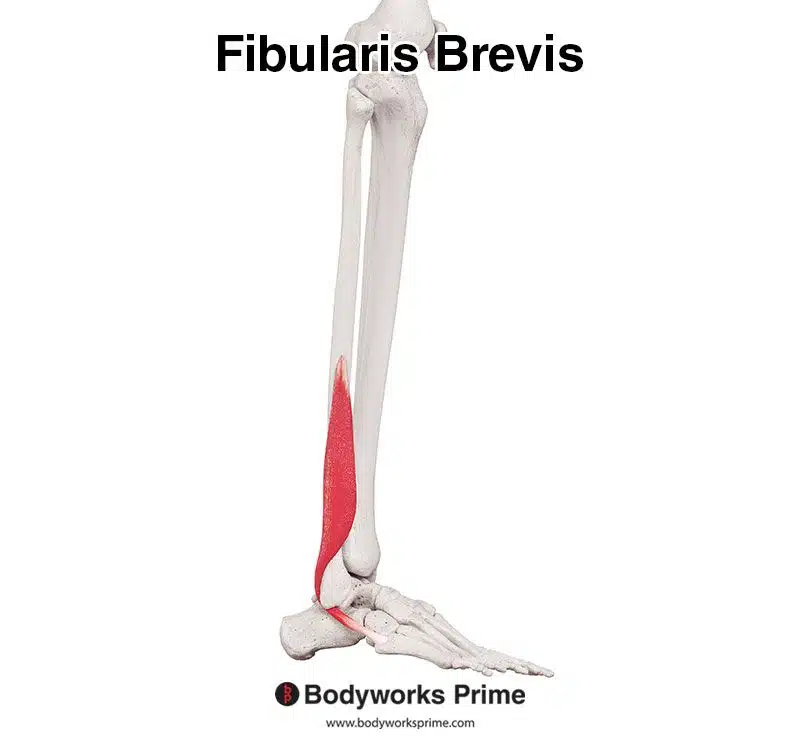
Pictured here, we can see the fibularis brevis muscle, seen from a lateral view.
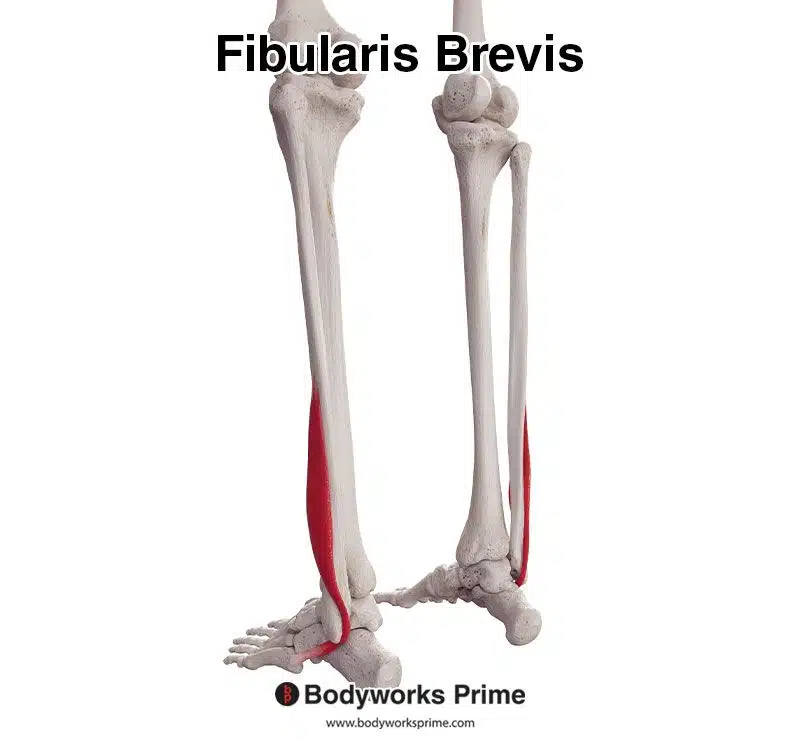
Pictured here, we can see the fibularis brevis muscle, seen from a posterolateral view.
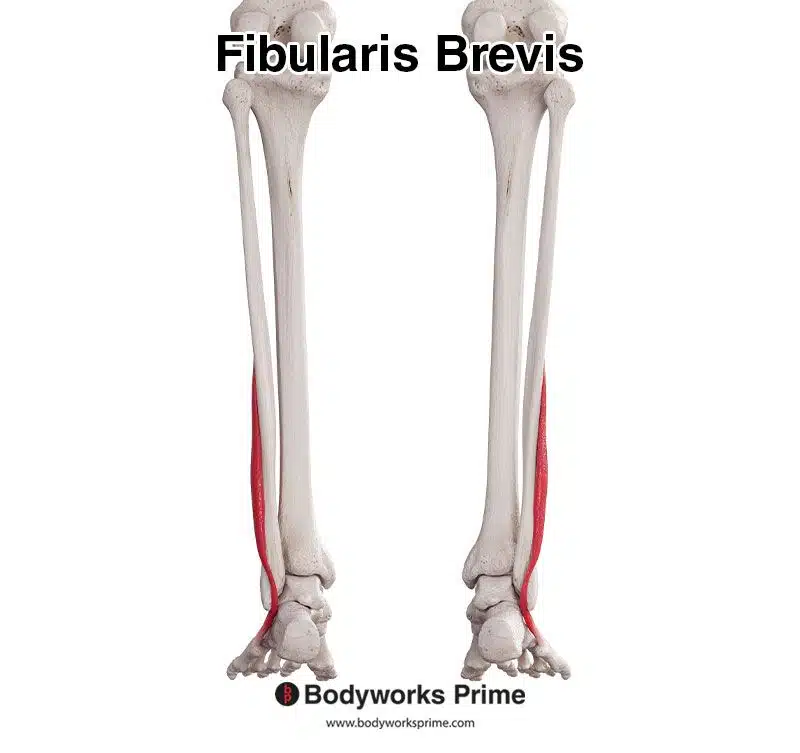
Pictured here, we can see the fibularis brevis muscle, seen from a posterior view.
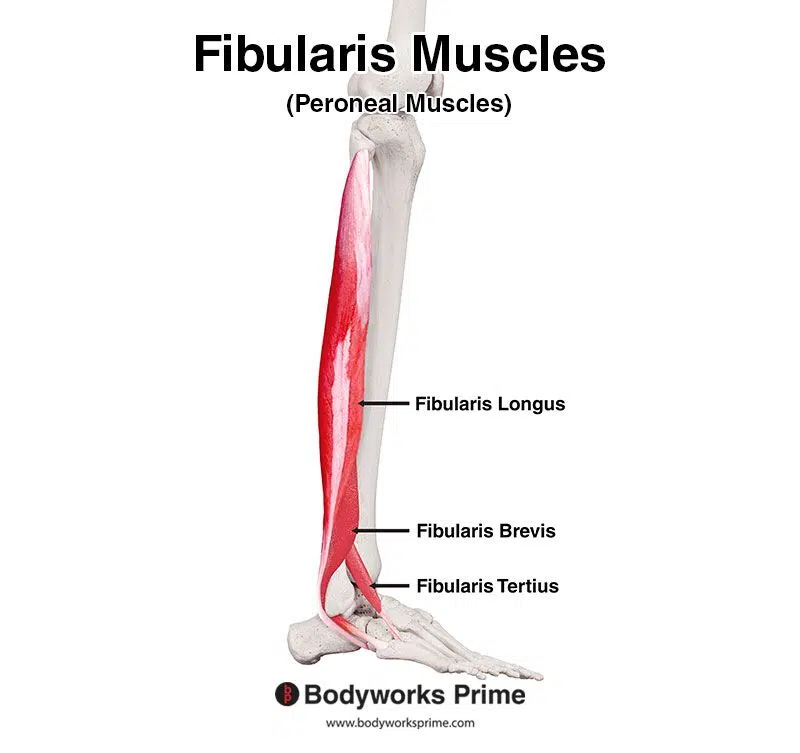
Pictured here, we can see all three of the fibularis muscles: the fibularis longus, fibularis brevis, and fibularis tertius.
Origin & Insertion
The fibularis brevis has its origin on the distal two-thirds of the lateral surface of the fibula. This site provides a sturdy base from which the muscle can exert force. The muscle then forms a tendon which continues past the ankle joint, passing behind the lateral malleolus and through a groove on the calcaneus, to its insertion at the base of the fifth metatarsal, specifically the tuberosity of the fifth metatarsal. This tuberosity is a prominent area located on the lateral side of the base of this bone, providing an ideal leverage point for the muscle’s actions [10] [11] [12].
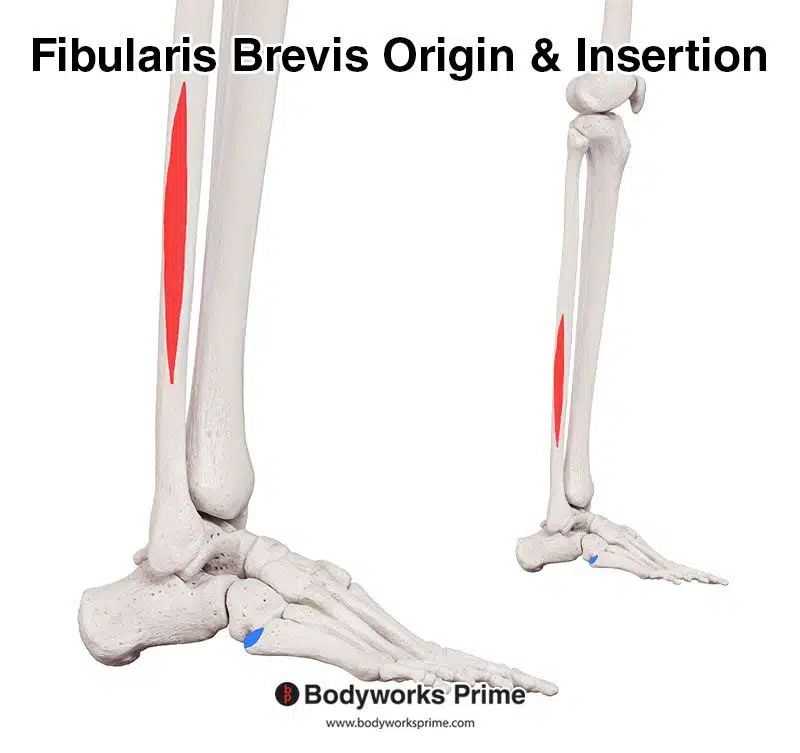
Pictured here, we can see the fibularis brevis muscle’s origin marked in red on the fibula’s lateral surface and its insertion marked in blue on the tuberosity of the fifth metatarsal.
Actions
The primary action executed by the fibularis brevis is the eversion of the foot, a movement that involves tilting the sole of the foot away from the midline of the body. This action helps with maintaining balance, especially on uneven terrain, and allows for adaptive changes in the foot’s posture. In addition to this, the fibularis brevis assists weakly with plantarflexion of the foot at the ankle joint. Plantarflexion refers to the downward movement of the foot away from the leg, a motion evident in exercises such as ‘calf raises’ and during the push-off phase while walking [13] [14] [15].
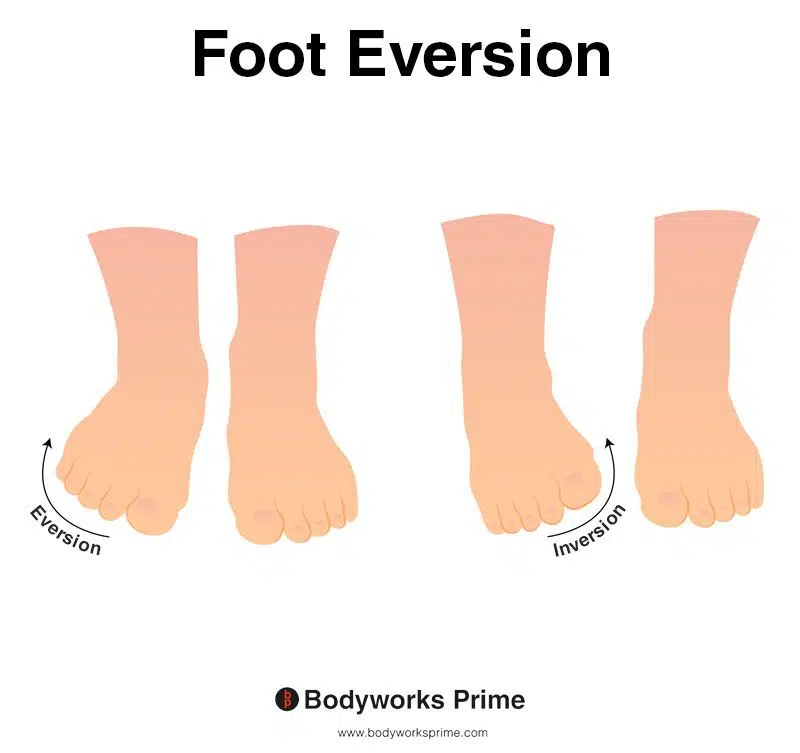
This picture demonstrates foot eversion, which means rotating the foot outwards, causing the sole of the foot to turn away from the body. The opposite of eversion is inversion. Eversion is the primary action of the fibularis brevis.
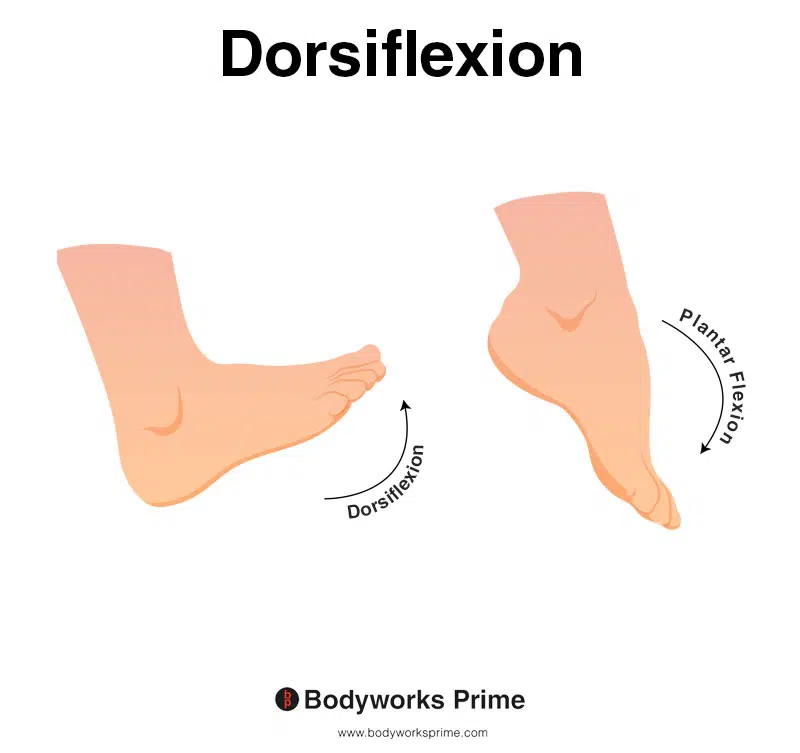
This image shows an example of dorsiflexion of the foot, which involves flexing the ankle joint, thereby lifting the foot upwards and towards the shins. The opposite of dorsiflexion is plantar flexion. Dorsiflexion is a secondary action of the fibularis brevis.
Innervation
The fibularis brevis is innervated by the superficial fibular (peroneal) nerve, which originates from the spinal roots of L5 and S1. This nerve is responsible for both conveying signals from the brain to the muscle for contraction and transmitting sensory information from the leg to the central nervous system. The superficial fibular nerve is a terminal branch of the common fibular nerve and the common fibular nerve is a branch of the sciatic nerve [16] [17] [18].
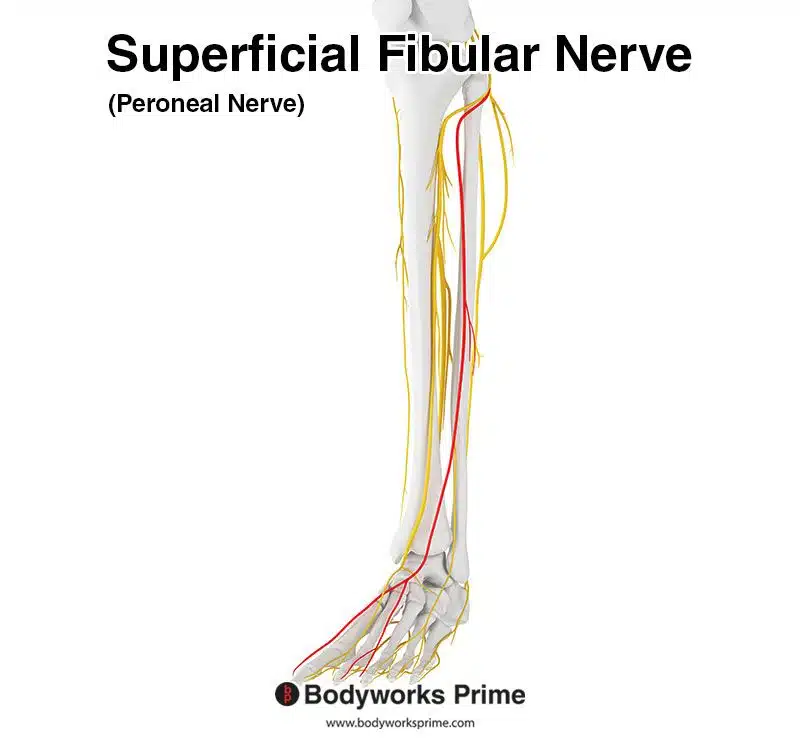
Pictured here, we can see the superficial fibular nerve highlighted in red. The superficial fibular nerve innervates the fibularis brevis from the nerve roots of L5 and S1. The superficial fibular nerve was previously known as the peroneal nerve.
Blood Supply
Blood is supplied to the fibularis brevis primarily by the fibular (peroneal) artery, particularly its muscular branches. This muscle also receives blood from the anterior tibial artery [19].
Want some flashcards to help you remember this information? Then click the link below:
Fibularis Brevis Flashcards
Support Bodyworks Prime
Running a website and YouTube channel can be expensive. Your donation helps support the creation of more content for my website and YouTube channel. All donation proceeds go towards covering expenses only. Every contribution, big or small, makes a difference!
References
| ↑1, ↑4, ↑7, ↑10, ↑13, ↑16 | Dalley AF II, Agur AMR. Moore’s Clinically Oriented Anatomy. 9th ed. Wolters Kluwer Health; 2022. |
|---|---|
| ↑2, ↑5, ↑8, ↑11, ↑14, ↑17 | Standring S. (2015). Gray’s Anatomy: The Anatomical Basis of Clinical Practice, 41st Edn. Amsterdam: Elsevier |
| ↑3, ↑6, ↑9, ↑12, ↑15, ↑18 | Palastanga N, Soames RW. Anatomy and Human Movement: Structure and Function (Physiotherapy Essentials), 6th ed. Elsevier; 2011. ISBN-13: 978-0702035531. |
| ↑19 | Basit H, Shah J, Siccardi MA. Anatomy, Bony Pelvis and Lower Limb, Foot Peroneus Brevis Muscle. [Updated 2023 Apr 4]. In: StatPearls [Internet]. Treasure Island (FL): StatPearls Publishing; 2023 Jan-. Available from: https://www.ncbi.nlm.nih.gov/books/NBK535427/ |










